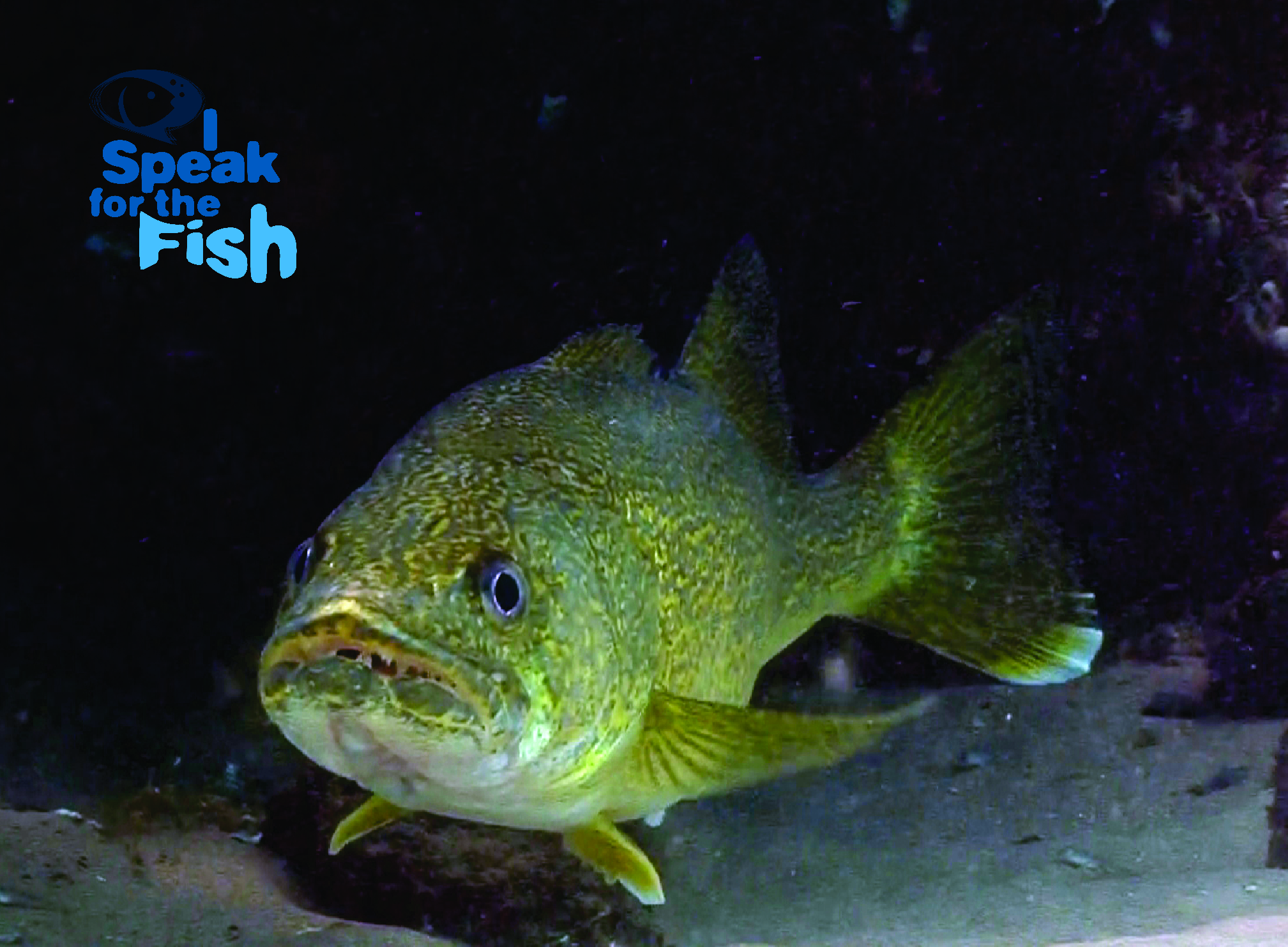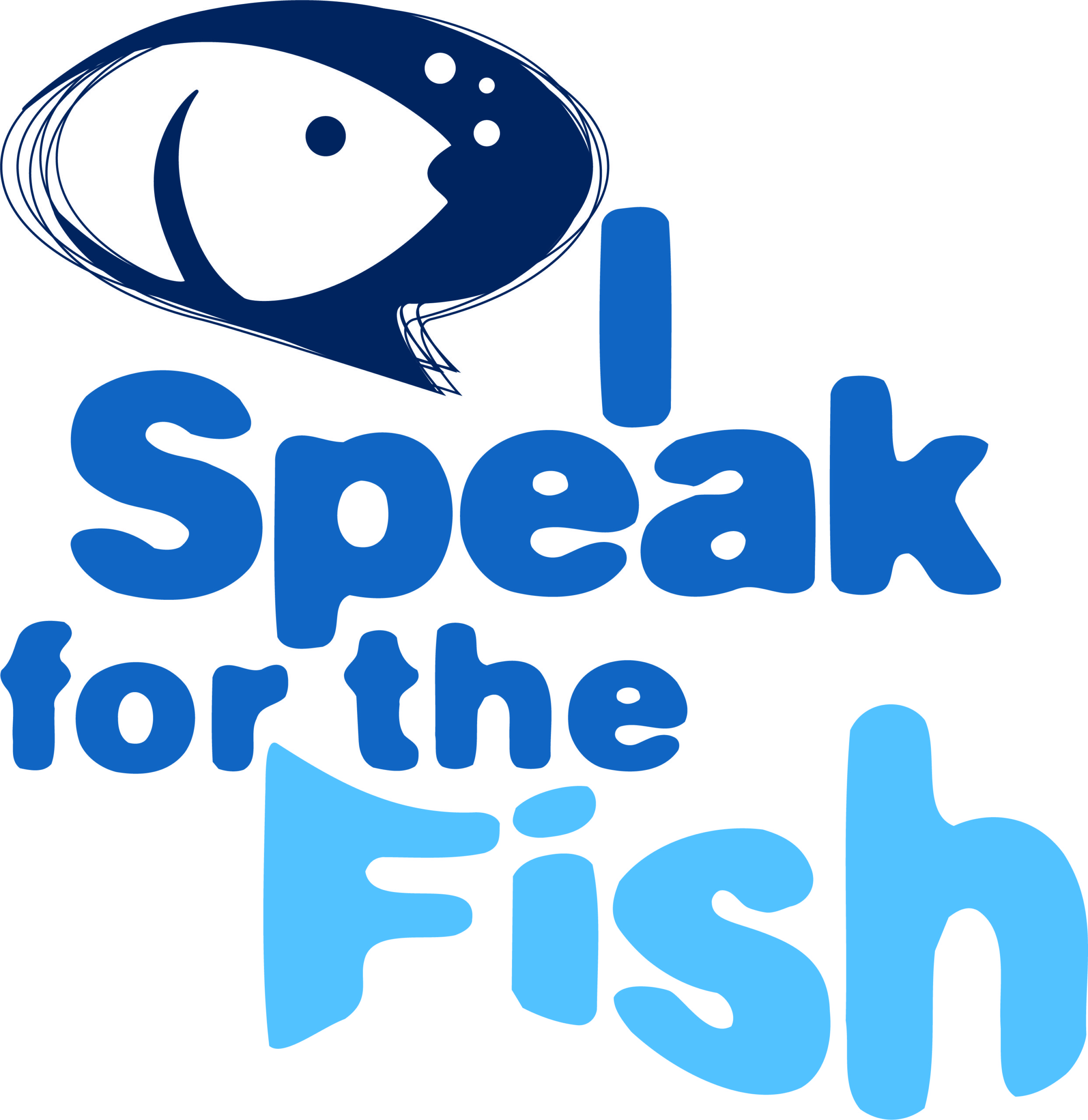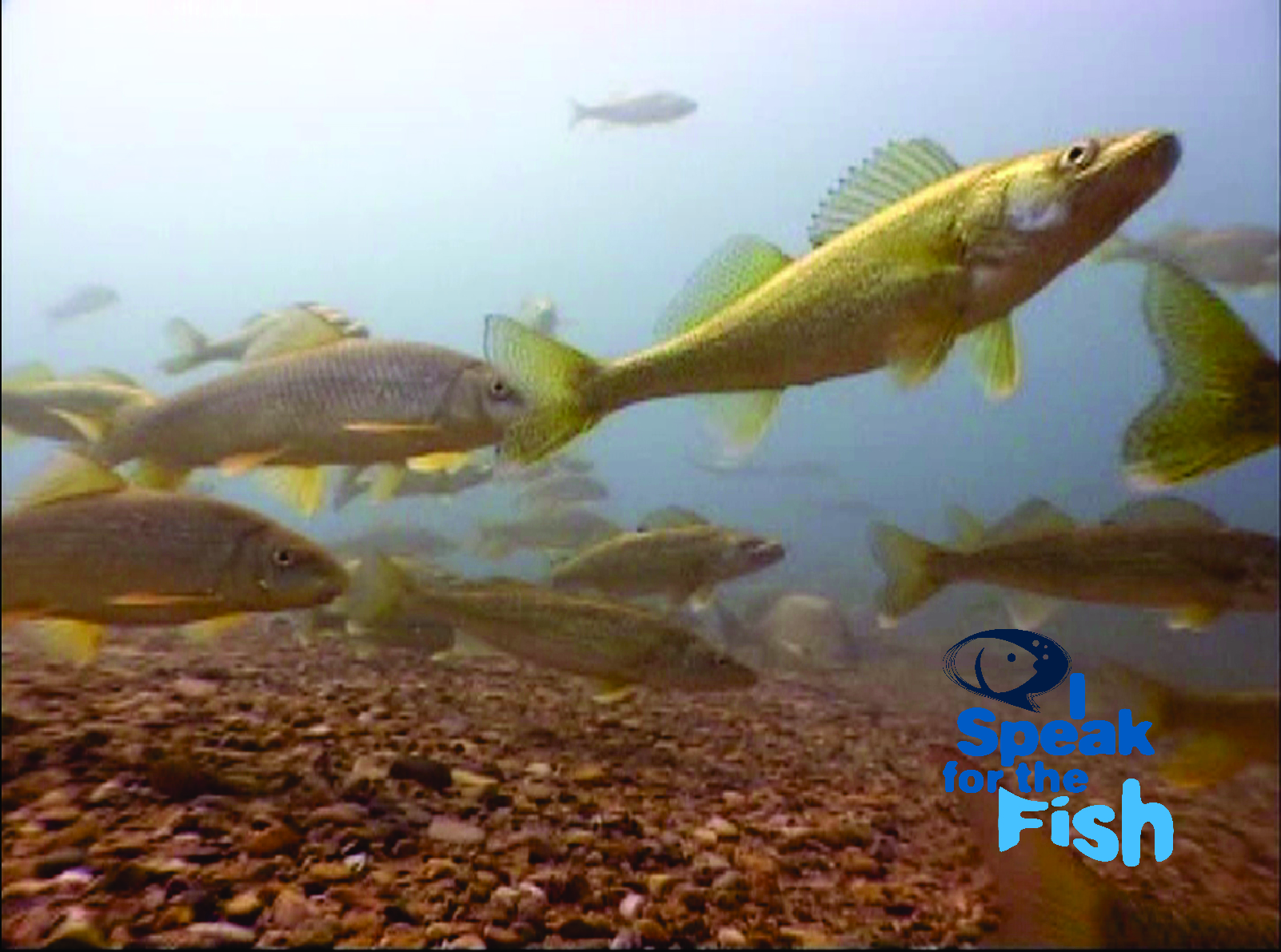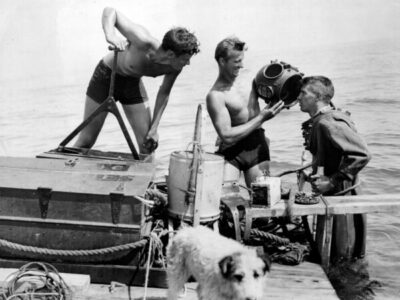
 I Speak for the Fish is a monthly column written by Great Lakes Now Contributor Kathy Johnson, coming out the third Monday of each month. Publishing the author’s views and assertions does not represent endorsement by Great Lakes Now or Detroit Public Television. Check out her previous columns.
I Speak for the Fish is a monthly column written by Great Lakes Now Contributor Kathy Johnson, coming out the third Monday of each month. Publishing the author’s views and assertions does not represent endorsement by Great Lakes Now or Detroit Public Television. Check out her previous columns.
A wealth of emotion is conveyed when eyes glow with love or shimmer with tears.
Love stories often begin the moment eyes meet across a room.
Leonardo Da Vinci and William Shakespeare both found the eyes to be windows to the soul.
In fact, eye contact plays such a critical role in human communication that refusal to make eye contact is often taken as a sign of sketchiness. I find it’s the same with fish.
Most fish have very responsive eyes. When I look into their eyes, they look back.
It’s typically a fleeting moment. Just a split second of acknowledgement between two living beings. A flash of awareness between species.
I live for those moments.
Ghost eyes
It took me awhile to realize the reason I’ve never particularly bonded with walleye is because when I look into their eyes, I see… nothing.
No response. No recognition. No life.
The walleyes’ large vacant-looking eyes explain why common names include glasseyes and marbleeyes. Their ghostly stare is actually the result of light reflecting off a membrane in their retina according to my field guide to Fishes of the Central United States.
Their light sensitive eyes make them excellent dark water hunters.
Walleyes prefer muddy water, cloudy days and working the night shift. They hang out in deeper waters during the day and move into shallower waters at dusk to feed.
As nocturnal hunters, they often prey on small resting fish like darters and perch.
Walleyes follow prey like schooling minnows and runs of rainbow smelt rather than hunting in a specific spot. They tend to be constantly on the move which according to the Minnesota Department of Natural Resources website, “confounds even the most astute of walleye anglers.”
Their upper bodies have a brassy yellow slightly tarnished tone. Their white bellies make them hard to see from below. And the white tip of their tail fins is impossible to miss underwater.
Their long sleek frame makes them extremely fast and highly mobile even though most of the time when we see them during the day, they are just chilling a few feet off the bottom.
Walleyes have teeth in their mouths and throats. Their lower jaw has large canine teeth similar to pike and muskellunge, which has contributed to their lengthy list of common names.
From pike perch, grass pike, yellow pike, blue pike, gray pike and even green pike, which is funny given walleyes are not associated with pike at all. They’re actually in the Percidae family, making them an oversized perch rather than a small pike.

Juvenile walleye eats an emerald shiner. (Photo Credit: Greg Lashbrook/PolkaDot Perch)
Wooing walleye
Walleye will travel 100 miles or more in search of spring spawning sites.
Spawning takes place as soon as the ice breaks up in early spring when the water temperature is still a frigid 35 degrees. Similar to sturgeon, the males are the first to reach the spawning grounds.
Walleye are extremely prolific, with females carrying from 20,000 to 50,000 eggs per pound of body weight.
Spawning takes place at night with one to three females and up to six males forming small spawning groups.
Eggs are broadcast and most females will release all their eggs in a single night.
The eggs are left unguarded and will hatch in 12 to 18 days according to the ROM Field Guide to Freshwater Fishes of Ontario.
We always know when the walleyes are spawning in our area by the sheer volume of boats suddenly fishing at the mouth of the river.
While I can understand why fisherman would want to take advantage of a spawning run, I’m going to risk the wrath of some by questioning the wisdom of targeting any species while it is reproducing.
It doesn’t strike me as an ideal long-term management strategy.

School of walleye. (Photo Credit: Greg Lashbrook/PolkaDot Perch)
Fueling walleye
Juvenile walleyes have ferocious appetites. The ROM guide notes one instance where seven juveniles were found attached in a row. Each fish had managed to swallow half of the fish in front of it connecting all seven in a little walleye chain.
Juveniles are not fussy with their diet eating anything from mayflies and mollusks to small frogs and fishes. Whereas adults primarily eat other fish.
I read about a study in the Fishes of Illinois, where researchers calculated how many fish were needed to support one walleye.
They based their calculations on the contents of a surveyed walleye’s stomach which contained 10 small gizzard shad. Figuring the average lifespan of a walleye at three years, the researchers estimated each walleye consumes between 1,800 and 3,000 fishes in its lifetime.
The researchers further estimated that if a fisherman catches an average of 100 walleyes in a year (at a daily limit of six fish in Michigan that’s about 17 days fishing annually) it would require 180,000 to 300,000 shad or similar prey fish for walleye food.
One fisherman. 100 walleyes. 300,000 smaller fish.
Now, multiply that by two million which is the number of Michigan residents and nonresidents that fish Michigan waters each year according to the Michigan Department of Natural Resources’ 2022 Michigan Fishing Guide.
Then factor in Minnesota, Wisconsin, Illinois, Indiana, Ohio and Ontario fish licenses and it becomes an astronomical number of fish.
In contrast, I often stop at bait and tackle shops on my way to a dive site and buy a dozen nightcrawlers which I give to the fish — no strings attached.
Most fish are very receptive to a free meal with walleye being one of the rare exceptions.
I originally thought it would be a no-brainer to feed walleye. Even though their eyes appear lifeless, they are very much aware of us and seem surprisingly tolerant. They often let us come very close or they swim within a few feet of us.
If I didn’t already know walleye were carnivores, a jaw overflowing with sharp snarly teeth is a pretty universal identifier of a predator.
I figured put an easy target in front of any predator and they would take it.
Did the walleye? Nope.
The fisherman were catching walleye like clockwork with nightcrawlers but when I offered them a worm sans hook, they were not interested.
Bits, pieces and entire nightcrawlers were completely ignored by every walleye I met.
I let one crawler go directly upstream of a walleye and watched as the worm literally draped across the fish’s face.
The walleye just shook it off, making no attempt to eat it.
Turns out the higher the predator is in the food chain the more cautious they are. My attempts to feed them midday did not aid my cause.
It turned into a bit of a personal crusade to try to feed a walleye.
I tried a few things before landing on the one thing that it seems no walleye can resist… but I can’t reveal what it is as I promised not to give away their kryptonite.
Catch more news at Great Lakes Now:
I Speak for the Fish: Playing follow-the-leader with diving ducks
I Speak for the Fish: Courting Sunfish
Featured image: Juvenile walleye eats an emerald shiner. (Photo Credit: Greg Lashbrook/PolkaDot Perch)
2 Comments
-
“should an animal be targeted while it’s reproducing” is a good question to ask, but the correct answer varies on a case-by-case basis. Not just a species-by-species basis, but an individual species, site, time, and population basis. For walleyes in the western Lake Huron-to-Lake Erie corridor during the current era, it’s proven to have no negative effect on long-term management. Could that change someday? Sure.
-
Hi Duke, thanks for reading and taking the time to share. Totally agree that management needs to take a lot of factors into account. And as you note, it often works… until it doesn’t.




